You might not be familiar with the quenelle, but she’s commonly found in restaurants and, well, she’s kind of a big deal. Chefs quenelle lots of things, and for good reason. Even if you don’t give two hoots about fine dining, making food at home that looks good is still important. Because you deserve it.
Even if dessert is served at the coffee table, I still want it to look enticing. It’s the reason we stuff deviled eggs, or fold omelettes just-so, and it’s the reason you’d shape a quenelle at home–to make a dish you’re proud of, and food you want to dive into. With a couple rounds of practice you can accomplish this fine dining technique in your home kitchen. (Or just use the cheater’s method.)
To clarify: The quenelle is a shape that looks like an elongated egg. It’s three dimensional and round, with one tapered end and a slightly rounder end. You can make a quenelle of ice cream, or of whitefish salad. You can’t get this shape with an ice cream scoop or a disher, and it’s essentially this difference that elevates it. I like to quenelle some things at home, like meatballs and shortbread cookies, because it gives me a little variety, can change the texture, and I can keep my hands clean. (And sometimes a girl likes to nerd-out with culinary techniques.)
Achieving this shape is only tricky because the hand motion takes some getting used to. It’s probably not a motion you do with anything else when you’re cooking. Some folks also have spoon preferences, like a tapered tip, and a deep concave side instead of a shallow one.
There are three ways to scoop a quenelle. The first two are quicker once you get the hang of it, but work best with smooth material, like ice cream and mousses. The third takes a little longer but you can do it with almost any scoopable food, and use whatever spoons you have. Try them out and see which one works for you. Keep in mind, this takes getting used to, so don’t give up if your first, or even tenth, attempt comes out as a strange blob.
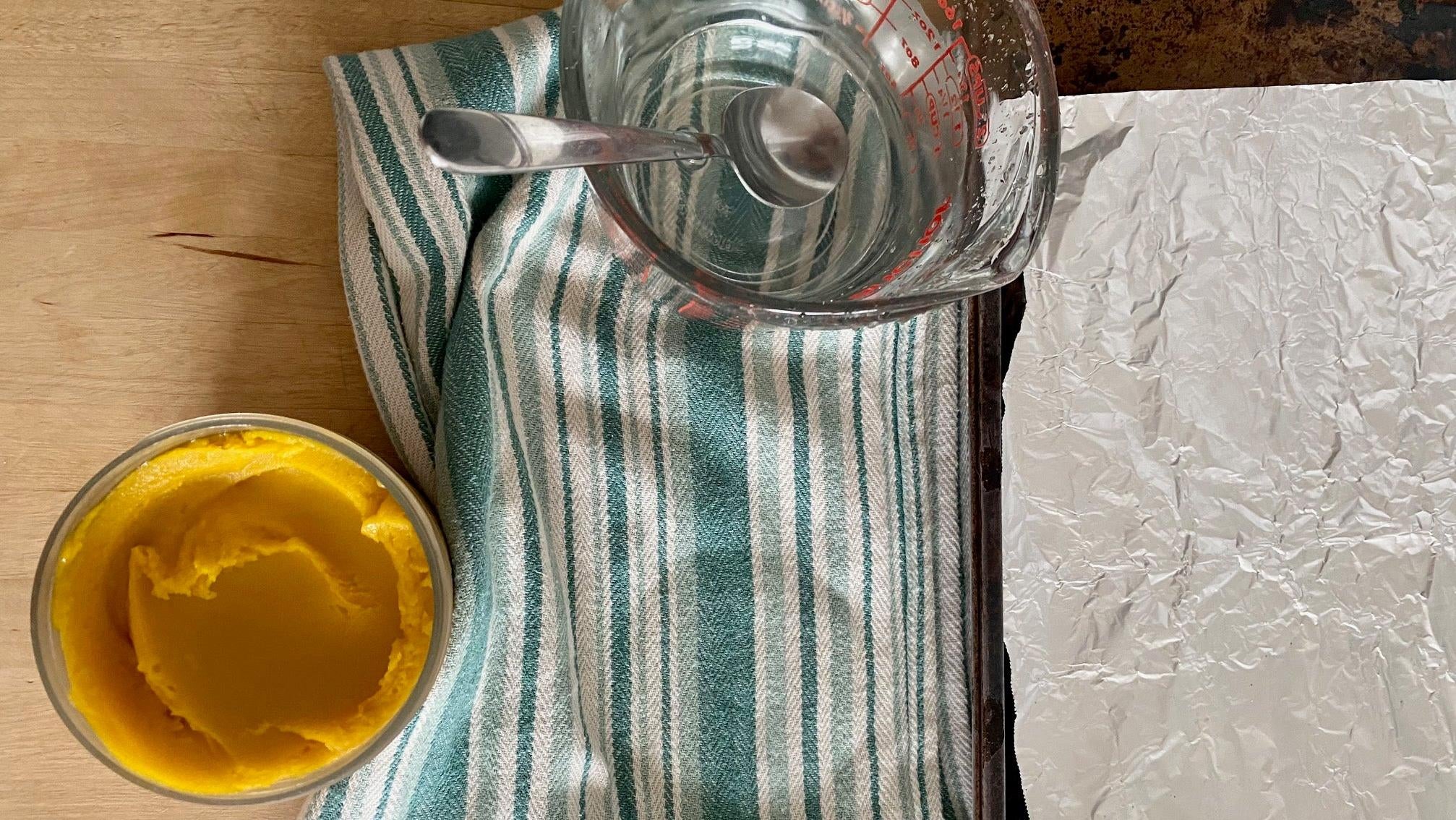
Start with a tub of smooth ice cream (lots of chunks like pretzels and pistachios can be troublesome), and a glass of lukewarm water. This will rinse off your spoon, smooth out the surface of the quenelle, and keep the cold ice cream from sticking to the metal spoon. I set up my station with the towel next to the water, and a cold foil landing pad for my quenelles (but you could just use brownies, pie, or whichever dessert is ready and waiting for your quenelles.) I used a pint of mango sorbet. The small tub made it a little harder to manoeuvre, but it still worked.
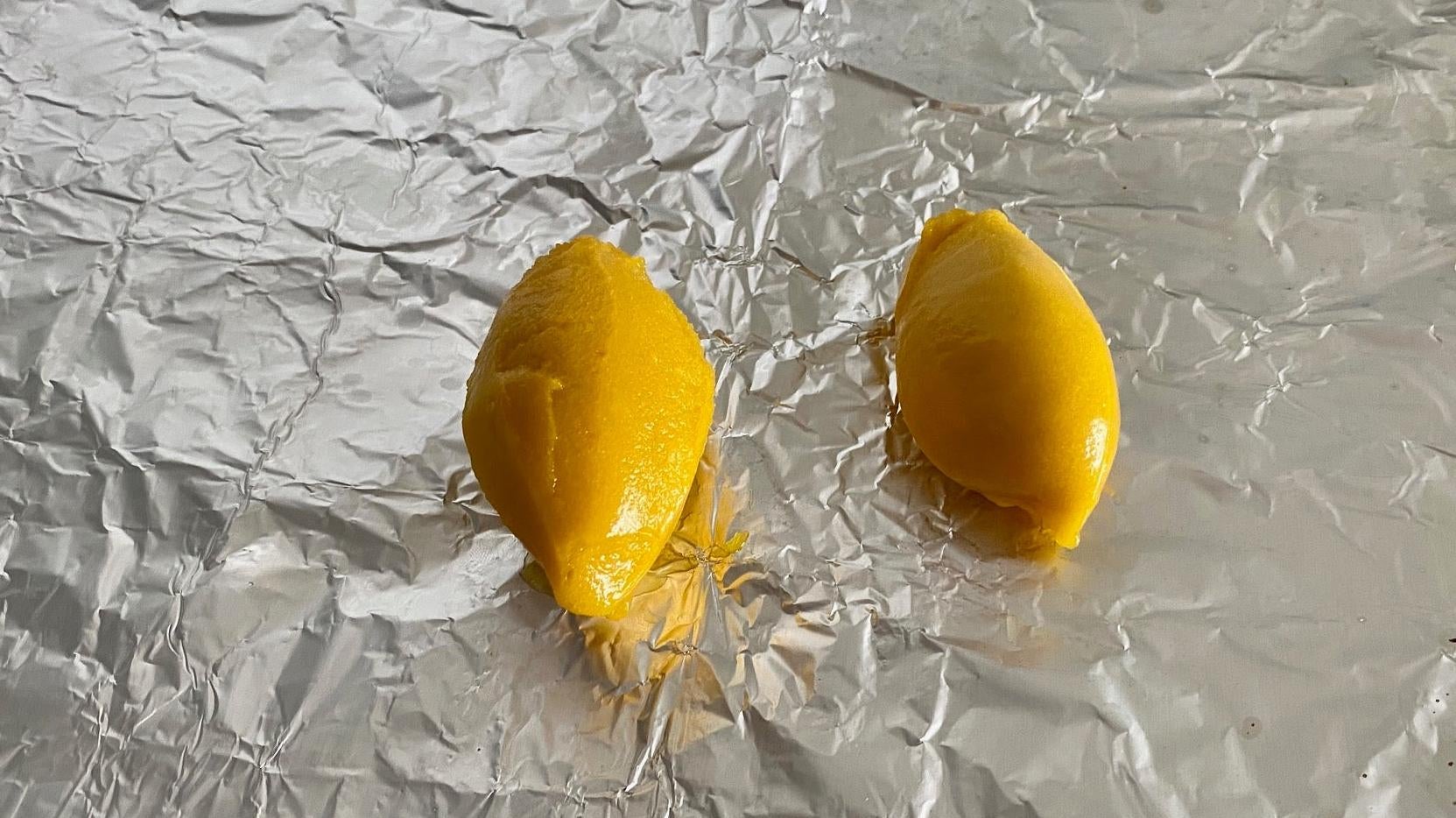
The J-curve
This approach works best with a medium amount of surface area and material to scoop, like those one-and-a-half-quarts of Turkey Hill ice cream. The ice cream should be softened in the fridge for about 40 minutes so it’s pliable, but not liquidy. Take the spoon out of the water and tap off the excess. Hold the spoon in your dominant hand, concave opening pointing down, and the spoon tip angled sharply downward. Press down into the ice cream, scooping toward your body. Then make a turn and tilt the spoon toward the centre of your body. Finish the scoop in a J-curve (this will be to the left if you’re right-handed, and to the right if you’re left-handed). As you lift the scoop up, drag it along the side of the container’s lip to help cut off the scoop and shape the side.
The backtrack
Using the same starting point as the J-curve — a spoon in water, and a large tub of pre-softened ice cream. Shake off the spoon and start with it in your dominant hand, held parallel to the surface of the ice cream, and the concave side facing away from you. Lower the spoon into the food and scrape down and away from you. Once the ice cream starts curling out of the spoon, quickly turn your wrist 180°, so the spoon dives down into the ice cream and turns completely to face your body. Scrape toward your body, backtracking over the same path, and lift up, using the side of the container to help cut off the scoop and shape it.
Johnny 2 spoons
This is what I call the cheater’s version, but it’s actually just as legitimate. I like this one because the mixture doesn’t matter, and you can make a quenelle out of anything, like coconut macaroons, ground beef, or egg salad. In the pictures, I was using whipped cream. Unlike the other two methods, you can do this method with the end of a mixture, or a small amount in general, you don’t need a tub of excess to help shape the quenelle.
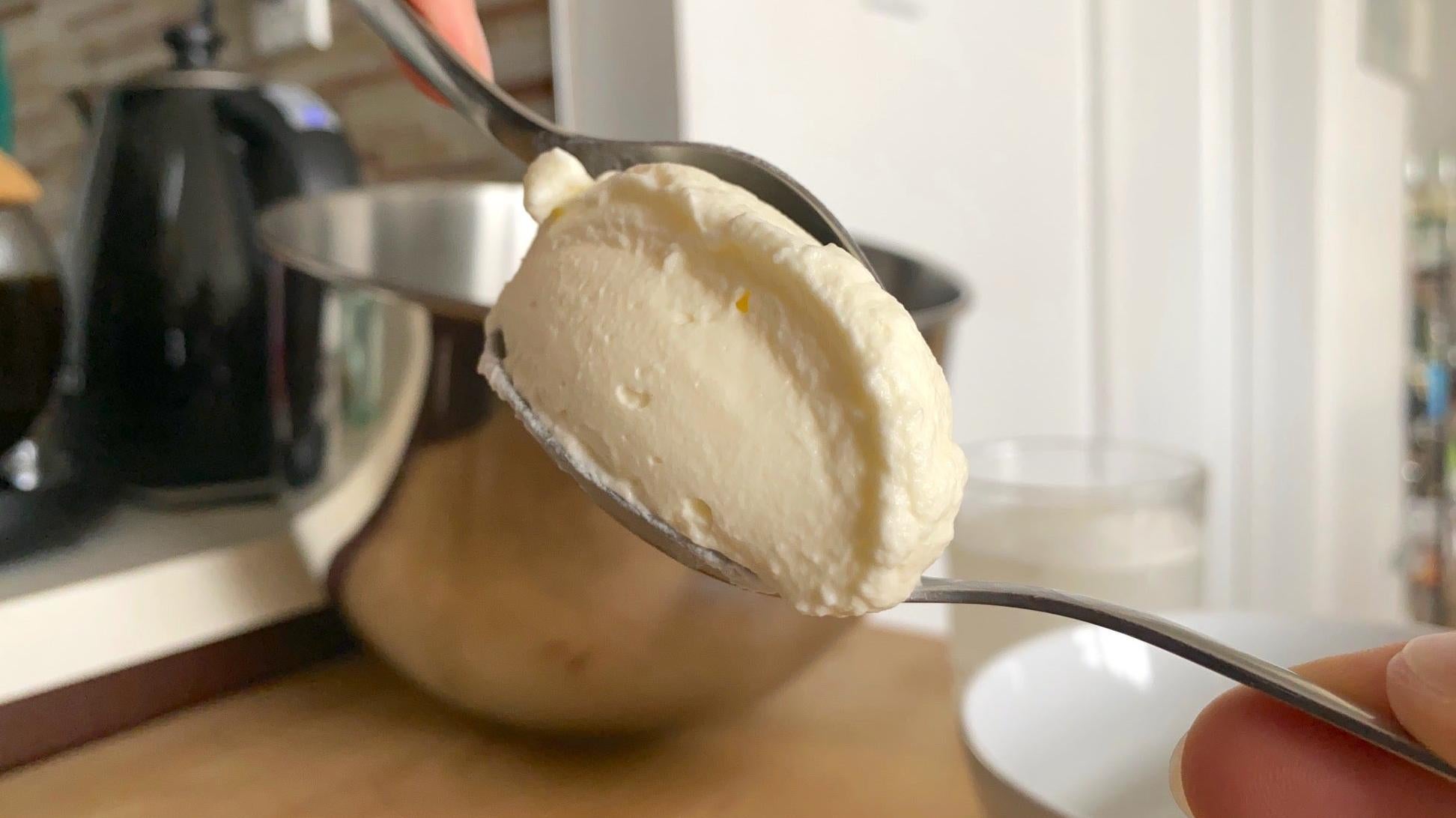
You need two equally sized two spoons, one in each hand. Scoop some ice cream into one spoon (Spoon A), then place the other spoon (Spoon B) on the back of the ice cream scoop, with the edge of the spoon just inside the other spoon’s edge, facing your body. Spoon A is facing up, and B is facing you. They’re about to actually spoon each other. Scrape spoon B down along inside Spoon A, essentially replacing it.
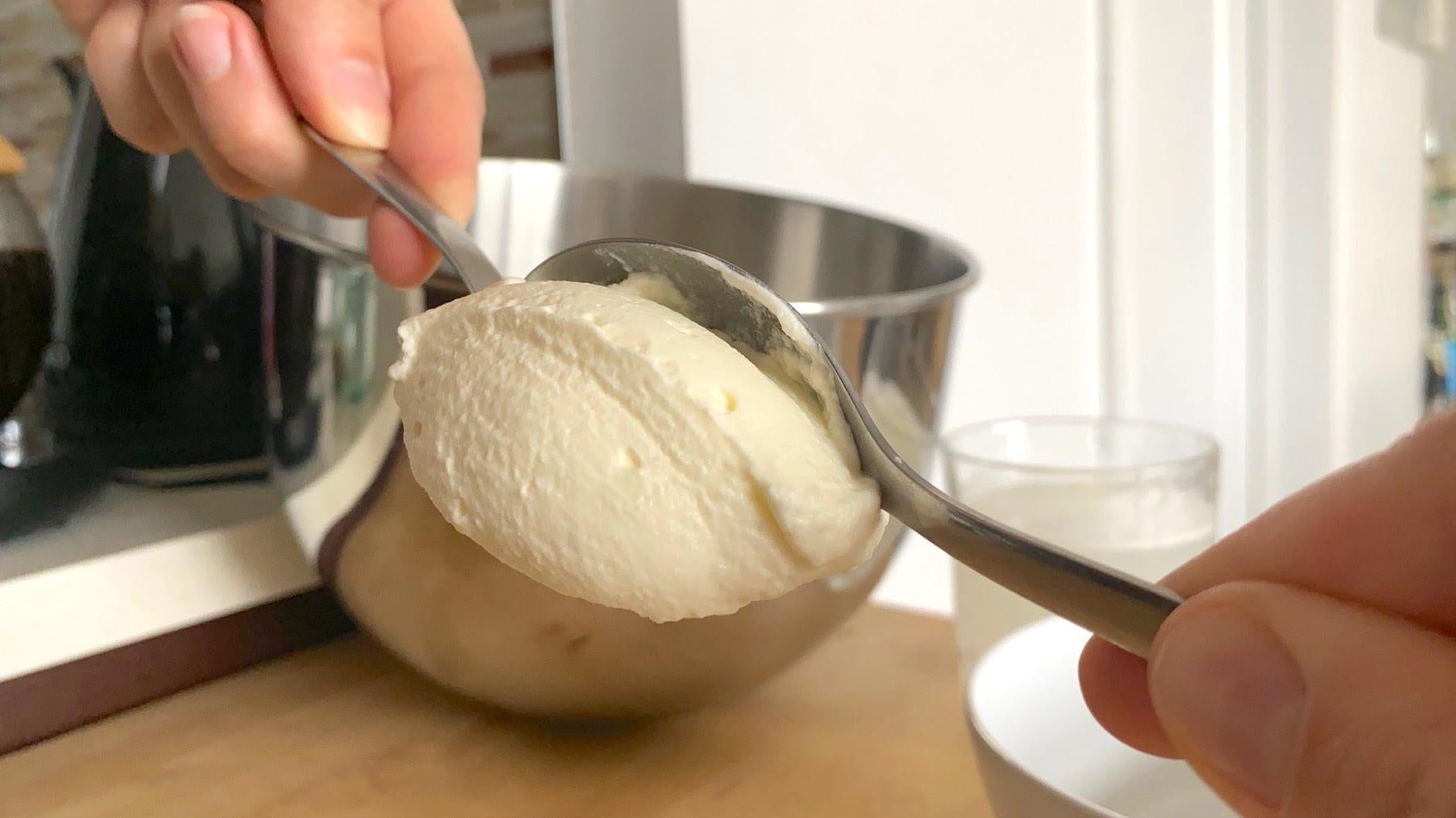
Now Spoon B is holding the ice cream and Spoon A is free. The area where Spoon A was is now flat and smooth. Repeat this pattern a few times until you get a rounded, slightly three-sided quenelle.
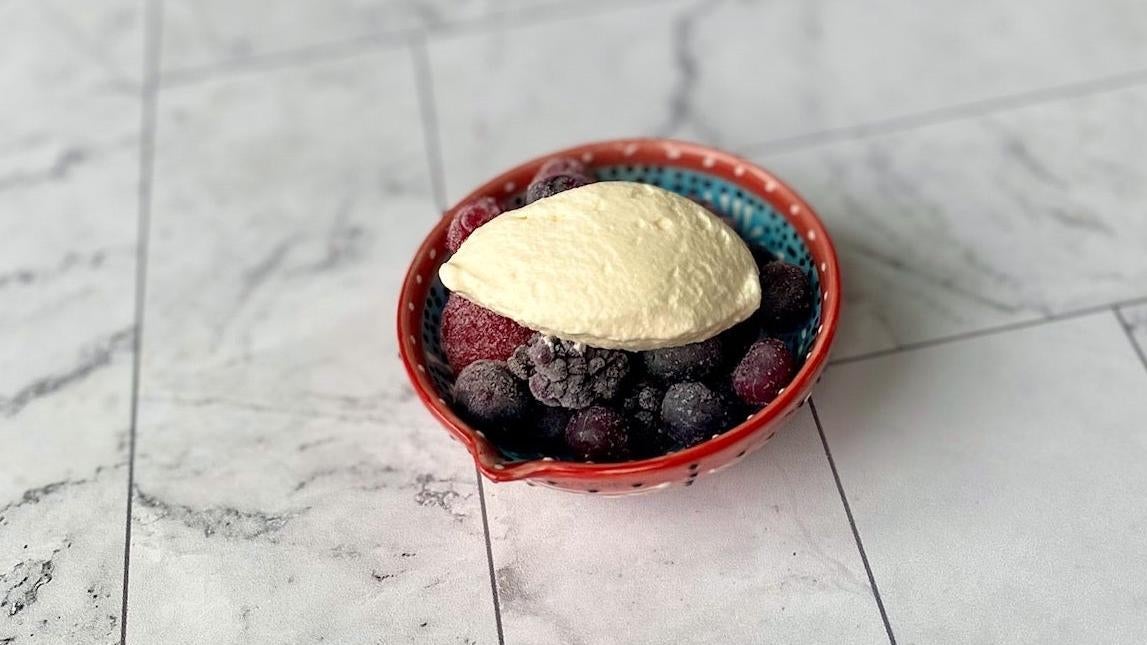
If you’re having difficulty dismounting your perfect quenelle, make sure you’re dipping the spoon in water and shaking it off, or dabbing it on a tea towel, between each attempt. You don’t want the spoon to add a lot of water to the mixture, but a small amount will help shape the quenelle and allow the finished one to slide off easily. If you’re scooping ice cream, sorbet, or something else frozen, rub the bottom edge on your palm to warm it up just before you drop the quenelle onto a plate. Try scooping quenelles of mousses, tuna salad, compound butter, dumplings, cookie dough, or falafel.
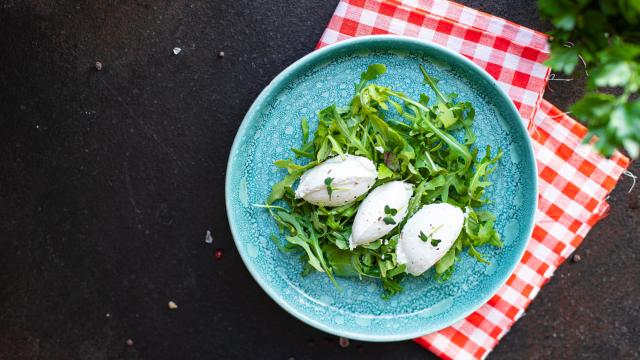
Leave a Reply
You must be logged in to post a comment.